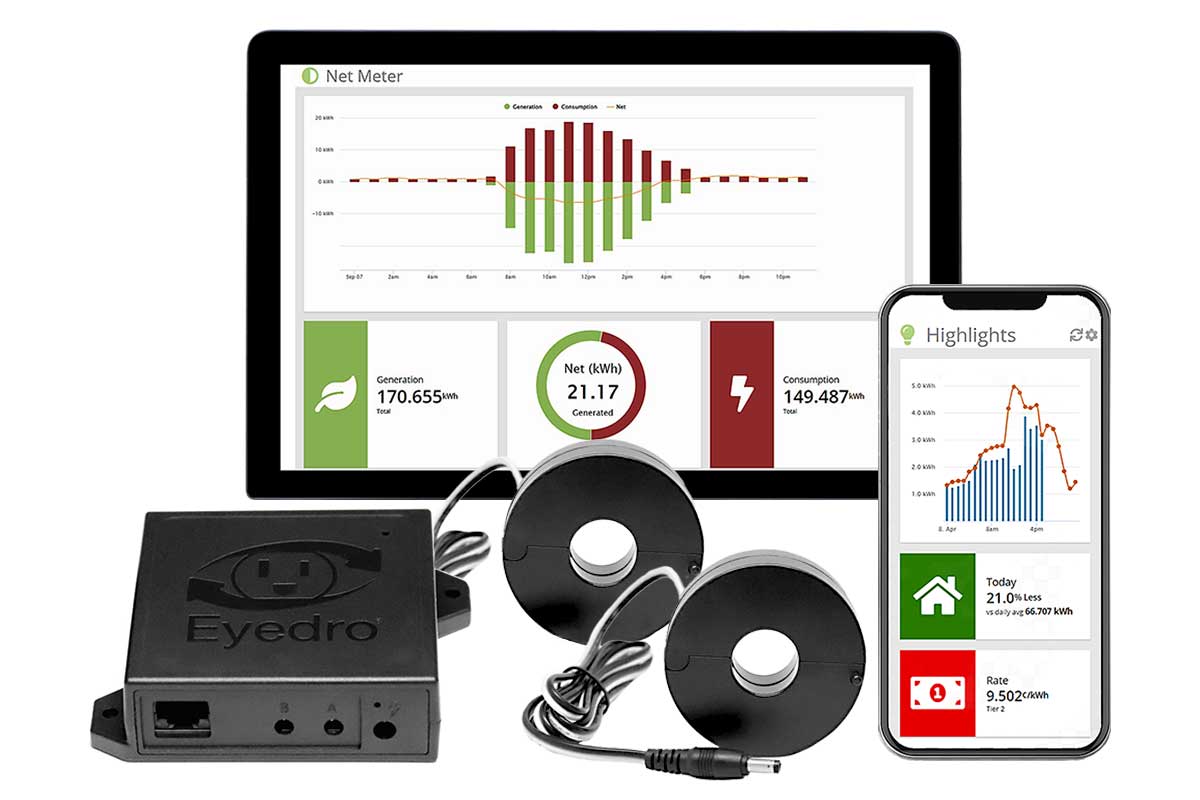Hi,
I currently have solar panels with a good app from solar edge that shows my production in real time. I was looking into getting a whole house energy monitor as well, especially since I’m installing a heat pump and would like to measure when it’s best to use it vs. wood and the legacy oil system we still have as a backup. But I don’t think that a monitor will pay for itself quickly if at all - it’s mostly a gadget for me to play with since I’m a nerd. So I don’t want to spend a lot of money on the gadget.
The Sense with Solar can be pretty expensive. They are installed completely in the electrical panel except for an antennae in a knockout. They would also require getting another 240 breaker to power it. There are cheaper options like Eyedro that mount outside of the main electrical box. But I’m not sure if the design is safe / to code.
They require running CT clamps on the main out of the panel box to the monitor. The monitor then plugs into a standard wall outlet. There are a few concerns I could think of.
- CT clamps getting tugged and yanking on the mains inside the box.
- The low voltage wires for the CT clamps are mixed around with the high voltage wires inside the box which I think is not allowed without some step down transformer.
Mounting the monitor in a safe location right next to the panel and securing the wires may help but I’m guessing it’s not to code?
I guess you could put the monitor in the panel like a Sense, but then for the power supply you’d have to run the wire from the outlet back into the box - which defeats the purpose.
Another option I thought of was to put everything into a large box with an outlet inside and run the CT wires through conduit. But at that point you’re probably better off just paying the money for the monitors that are designed to be inside the box.
Am I thinking about this right? You would think that to sell something that clamps on 200 amp wires that it would have to meet code. Not being an electrician I can’t say that it doesn’t, but I’m very suspicious. Or is there something I’m not think about here that makes this all ok?

 eyedro.com
eyedro.com
I currently have solar panels with a good app from solar edge that shows my production in real time. I was looking into getting a whole house energy monitor as well, especially since I’m installing a heat pump and would like to measure when it’s best to use it vs. wood and the legacy oil system we still have as a backup. But I don’t think that a monitor will pay for itself quickly if at all - it’s mostly a gadget for me to play with since I’m a nerd. So I don’t want to spend a lot of money on the gadget.
The Sense with Solar can be pretty expensive. They are installed completely in the electrical panel except for an antennae in a knockout. They would also require getting another 240 breaker to power it. There are cheaper options like Eyedro that mount outside of the main electrical box. But I’m not sure if the design is safe / to code.
They require running CT clamps on the main out of the panel box to the monitor. The monitor then plugs into a standard wall outlet. There are a few concerns I could think of.
- CT clamps getting tugged and yanking on the mains inside the box.
- The low voltage wires for the CT clamps are mixed around with the high voltage wires inside the box which I think is not allowed without some step down transformer.
Mounting the monitor in a safe location right next to the panel and securing the wires may help but I’m guessing it’s not to code?
I guess you could put the monitor in the panel like a Sense, but then for the power supply you’d have to run the wire from the outlet back into the box - which defeats the purpose.
Another option I thought of was to put everything into a large box with an outlet inside and run the CT wires through conduit. But at that point you’re probably better off just paying the money for the monitors that are designed to be inside the box.
Am I thinking about this right? You would think that to sell something that clamps on 200 amp wires that it would have to meet code. Not being an electrician I can’t say that it doesn’t, but I’m very suspicious. Or is there something I’m not think about here that makes this all ok?

EYEDRO-HOME
Eyedro energy cost monitor for homeowners, solar, and grid power metering with your choice of WiFi or Ethernet connectivity. Model EYEDRO-HOME.
 eyedro.com
eyedro.com

